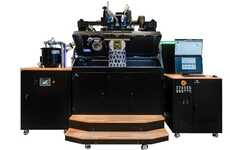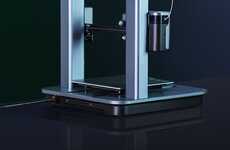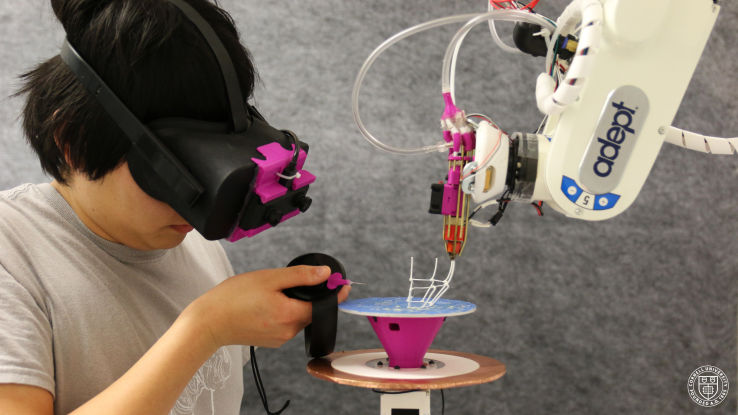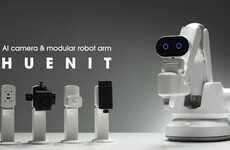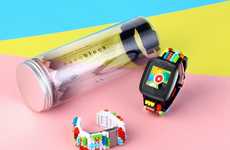
The Robotic Modeling Assistant Combines AR With Robotic 3D Printing
Justin Lam — February 23, 2018 — Tech
References: techcrunch & digitaltrends
Combing two incredible tech trends, the Robotic Modeling Assistant (RoMA) brings together robotic 3D printing and augmented reality. This innovative blend of tech gives users the ability to design primitive 3D models in real-time alongside a fast 3D printer. The system is currently being developed by a group of researchers out of MIT and Cornell in an attempt to give designers the ability to maintain constant visual access to a 3D-printed project. The technology is still in its early stages and is limited to primitive, skeletal designs, but all members of the team are optimistic about the future development of this system.
The Robotic Modeling Assistant currently functions with the user wearing a AR headset while wielding two controllers. The controllers give the user the ability to build 3D models using a CAD program, while the headset gives an AR representation of the design. The actual printing is handled by a 3D printer mounted on a robotic arm. The current design of the printer offers an incredibly fast print time, but is limited to basic designs.
Image Credit: Tech Crunch
The Robotic Modeling Assistant currently functions with the user wearing a AR headset while wielding two controllers. The controllers give the user the ability to build 3D models using a CAD program, while the headset gives an AR representation of the design. The actual printing is handled by a 3D printer mounted on a robotic arm. The current design of the printer offers an incredibly fast print time, but is limited to basic designs.
Image Credit: Tech Crunch
Trend Themes
1. Robotic 3D Printing - The combination of robotic 3D printing and augmented reality presents disruptive innovation opportunities in the manufacturing industry by enabling real-time design and fast printing.
2. Augmented Reality - Augmented reality technology integrated with 3D printing opens up opportunities for immersive design experiences and interactive collaborations.
3. CAD Program - Advancements in CAD programs utilized in conjunction with AR and robotic 3D printing provide designers with enhanced visualization and control during the design process.
Industry Implications
1. Manufacturing - The manufacturing industry can capitalize on the integration of robotic 3D printing and augmented reality to streamline the prototyping and production processes.
2. Design - The design industry can leverage augmented reality and robotic 3D printing to create interactive and dynamic design experiences for clients and customers.
3. CAD Software Development - The development of CAD software that seamlessly integrates with AR and robotic 3D printing presents disruptive innovation opportunities in the technology sector.
4.1
Score
Popularity
Activity
Freshness


